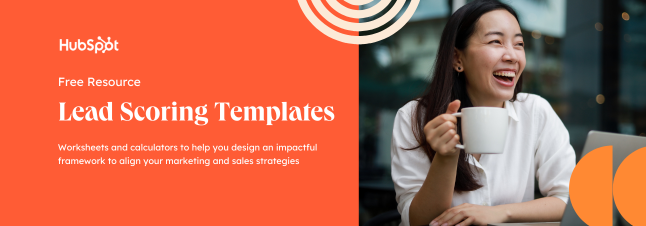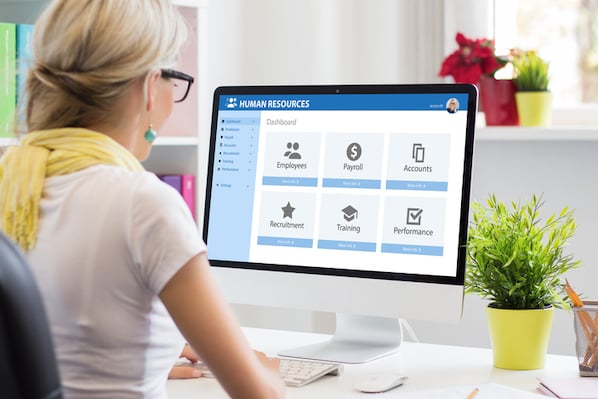If your marketing team and the systems you have in place to attract leads are working properly, you’re likely seeing anywhere from 10s to 1,000s of new leads each week. If you’ve got a robust sales team, they may be able to contact every single lead within a few hours.

However, if you’re like most companies, your sales team has to prioritize in order to reach out to the “best” prospects quickly, while saving the “less likely” prospects for last. This doesn’t mean that they can’t be converted, there’s just a lower chance of securing those prospects as customers.
Time spent courting the wrong prospect is not only an exercise in futility, but it takes time away from your salespeople and prevents them from closing sales and making your company money. How then, do you make the job easier (and more lucrative) for your salespeople?
Predictive Lead Scoring can take the guesswork out of following up on leads. Let’s take a look at what it is and how it could help your business grow.
What is predictive lead scoring?
Before we define predictive lead scoring, it’s important to understand traditional lead scoring and its limitations.
Businesses have struggled with prioritizing lead follow-up for decades. In many cases, salespeople are left to their own devices, using their best judgment to decide who gets contacted first. Marketers and salespeople use data such as demographic info (age, marital status, industry, role), to rank potential customers as to how likely they are to buy. Those who rank high on this scale are contacted first, while others are contacted last, or if time doesn’t permit, not contacted at all.
The problem with this subjective process is that it’s … subjective. Salespeople are forced to rely on “gut feelings” and factor in their own historical experience to make this decision. Neither of these proves to be consistently accurate causing quality leads to slip through the cracks as they chase prospects unlikely to buy.
Predictive lead scoring is machine learning that takes this theory one step further by using predictive modeling algorithms to analyze data from past customers and current prospects to predict future outcomes. Put another way, predictive lead scoring has the ability to create an “ideal customer” profile based on past buying behavior, and then identify which current prospects best fit that profile. It removes the possibility for human error or bias and instead relies on hard data to make its predictions.
The Benefits of Predictive Lead Scoring
If your marketing and sales teams have been struggling with identifying top leads and are unable to follow up with everyone that enters your database, predictive lead scoring may be exactly what your company needs. With a multitude of benefits, it’s like hiring another department to assist in new customer acquisition.
The benefits of predictive lead scoring include:
1. Create Harmony Between Marketing and Sales
When there are so many leads coming in but not many sales being closed, these two departments may turn on one another. The marketing department doesn’t understand how they're providing a large number of leads that Sales can’t close. And the sales department believes that quantity is more important than quality, and they aren’t getting any good leads.
Incorporating predictive lead scoring will help these two departments work together and produce more.
2. Save Time
An automated lead scoring system means that your marketing and sales teams no longer have to waste time vetting potential customers. Their time can be better spent bringing in more leads and following up on the right ones.
3. Remove Human Error
No matter how good (and quick) your employees are at reviewing potential customers, there will always be an inherent bias. People can’t approach a situation without drawing on memories of the past. No matter how objective they attempt to be, this bias will creep into every decision they make. Using a computer algorithm to make these decisions removes the possibility of human error or judgment.
4. Lightning-Fast Results
While it takes a little bit of time to set up, once predictive lead scoring is up and running, you’ll receive results considerably faster than you would if a person were doing the work. You receive high-quality, data-driven leads before a human employee could even get their coffee.
5. See Continual Improvement
As you close and service more customers, you’ll collect more data. The more data you have, the better predictive lead scoring works and the more data points you’ll have to work with.
Predictive lead scoring is ready to work for you and make your marketing and sales teams more efficient.
How to Incorporate Predictive Lead Scoring in Your Business
Now that you understand predictive lead scoring and how it can revolutionize your business, how do you get started?
HubSpot offers Predictive Lead Scoring software that integrates with your Enterprise CRM, providing machine learning that reviews thousands of data points across your contact base to identify your best leads.
These data points are drawn from analytics (website and email behavior), firmographic information about the contact’s company and their relationship within HubSpot, and interactions that have been logged in the CRM.
To use this feature:
- Click the Settings icon in the main navigation bar of your HubSpot account.
- From the left sidebar menu, navigate to CRM > Properties.
- Search in the Contact Information property group for Likelihood to close and Contact priority.
Likelihood to close is a score that represents the probability of a contact closing as a customer within the next 90 days. It used standard contact properties and behavior to predict this. If the score or probability value is 22, that means there is a 22% chance of closing as a customer in the next 90 days.
Contact priority uses the Likelihood to close score to filter segments of your best and worst leads.
As you accumulate more data, the system will improve itself, providing even better predictions and guiding you towards the most important leads. Because the program requires data to do its job, you will not begin seeing values for Contact priority until you have reached 100 contacts.
If you want to see your organization grow and your team members flourish, predictive lead scoring is essential. Imagine what your business will look like in five, 10, or 15 years when the system you use to attract and acquire new customers is fully optimized.
Give your marketing and sales teams a leg up on the competition and try predictive lead scoring today.

![Everything You Need to Know About Behavioral Segmentation [+ Examples]](https://blog.hubspot.com/hubfs/GettyImages-1416048929.jpg)








